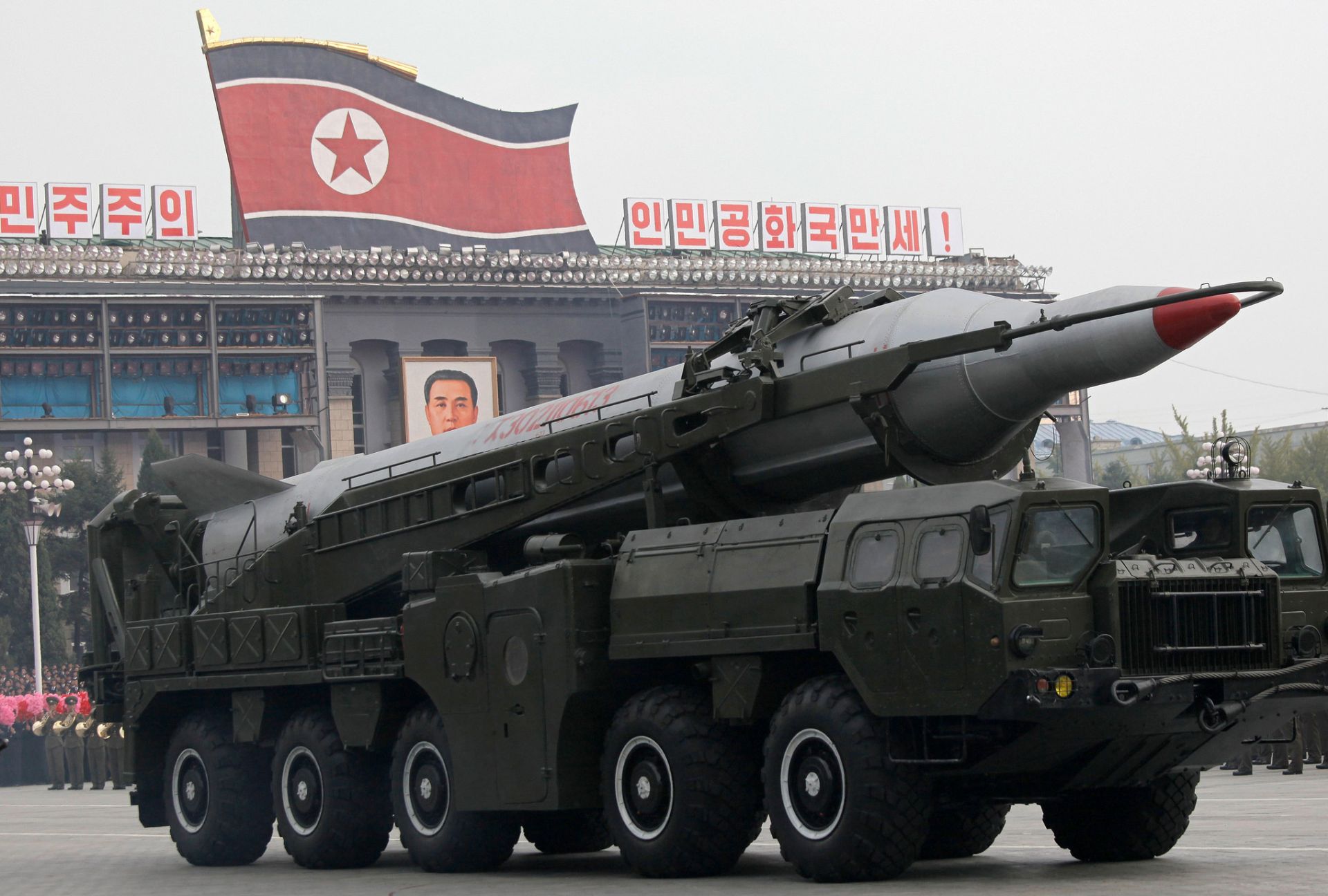Pentagon chief Ashton Carter on Thursday again threatened an “overwhelming” response if North Korea uses a nuclear weapon, reflecting heightened tensions after Pyongyang conducted another missile test.
Earlier in the day, North Korea had conducted a failed test — its second in a week — of a powerful medium-range missile that experts warn could be deployed as early as next year.
South Korean and US military monitors said the missile — believed to be an intermediate-range Musudan — exploded shortly after take-off at around 6:30 am Pyongyang time (2200 GMT Wednesday).
The attempted launch came just hours before the start of the third US presidential debate — a timely reminder of the challenge North Korea’s fast-moving nuclear weapons program will pose to the next occupant of the White House.
“We strongly condemn last night’s attempt, which even in failing, violated several UN Security Council resolutions,” Carter said at a joint press conference with his South Korean counterpart, Han Min-Koo.
Carter went on to repeat a pledge he made alongside Secretary of State John Kerry on Wednesday, ahead of the most recent missile test.
“Make no mistake: Any attack on America or our allies will not only be defeated, but any use of nuclear weapons will be met with an overwhelming and effective response.”
The launches highlight the shortcomings of the Musudan, Han suggested, noting there was a “high possibility” North Korean leader Kim Jong-Un was at the site of the most recent launch.
“For political purposes, they’re conducting these Musudan launches and through these failed tests, they’ve shown their limits,” Han said according to translated remarks.
It was the second failed launch in less than a week of the Musudan, which has a theoretical range of anywhere between 2,500 and 4,000 kilometers (1,500 and 2,500 miles).
The lower estimate covers the whole of South Korea and Japan, while the upper range would include US military bases on Guam.
New sanctions
The US and its two key Asian allies all condemned the latest launch as a clear violation of UN resolutions banning the North from using ballistic missile technology.
South Korean President Park Geun-Hye earlier said the North was “blatantly threatening” the entire region, while her foreign ministry denounced Pyongyang’s “manic obsession” with nuclear bombs and missiles.
The last Musudan test on Saturday was denounced by the UN Security Council, which is currently debating a fresh sanctions resolution against Pyongyang over its fifth nuclear test, carried out last month.
The missile has now been tested eight times this year — but only once successfully.
A Musudan launched in June flew 250 miles (400 kilometers) into the Sea of Japan (East Sea), and was hailed by Kim as proof of the North’s ability to strike US bases across “the Pacific operation theater.”
Despite the string of failures, some experts believe the missile is moving swiftly towards operational deployment.
Fast-track testing
According to John Schilling, an aerospace engineer specializing in rocket propulsion, the aggressive launch schedule, while multiplying the risk of failure, also increases the information gleaned from each test.
“If they continue at this rate, the Musudan intermediate-range ballistic missile could enter operational service sometime next year — much sooner than had previously been expected,” Schilling wrote recently on the 38North website of the US-Korea Institute at Johns Hopkins University.
North Korea has been hit by five sets of UN sanctions since it first tested a nuclear device in 2006.
After Pyongyang carried out its fourth nuclear test in January, the Security Council adopted the toughest sanctions resolution to date, targeting North Korea’s trade in minerals and tightening banking restrictions.
The ongoing negotiations on the new sanctions measure are focused on closing loopholes and zeroing in on North Korea’s nuclear and ballistic missile technology industry, according to Security Council diplomats.
The United States is set to deploy a missile-defense system to South Korea as soon as possible, despite opposition from China.
Washington sees the US-built Terminal High Altitude Area Defense (THAAD) system as protection against North Korea’s pursuit of missile and nuclear technology.
“Our missile defenses are necessary to protect our people. That’s the purpose of THAAD and any other missile defenses that we develop or deploy together,” Carter said.










